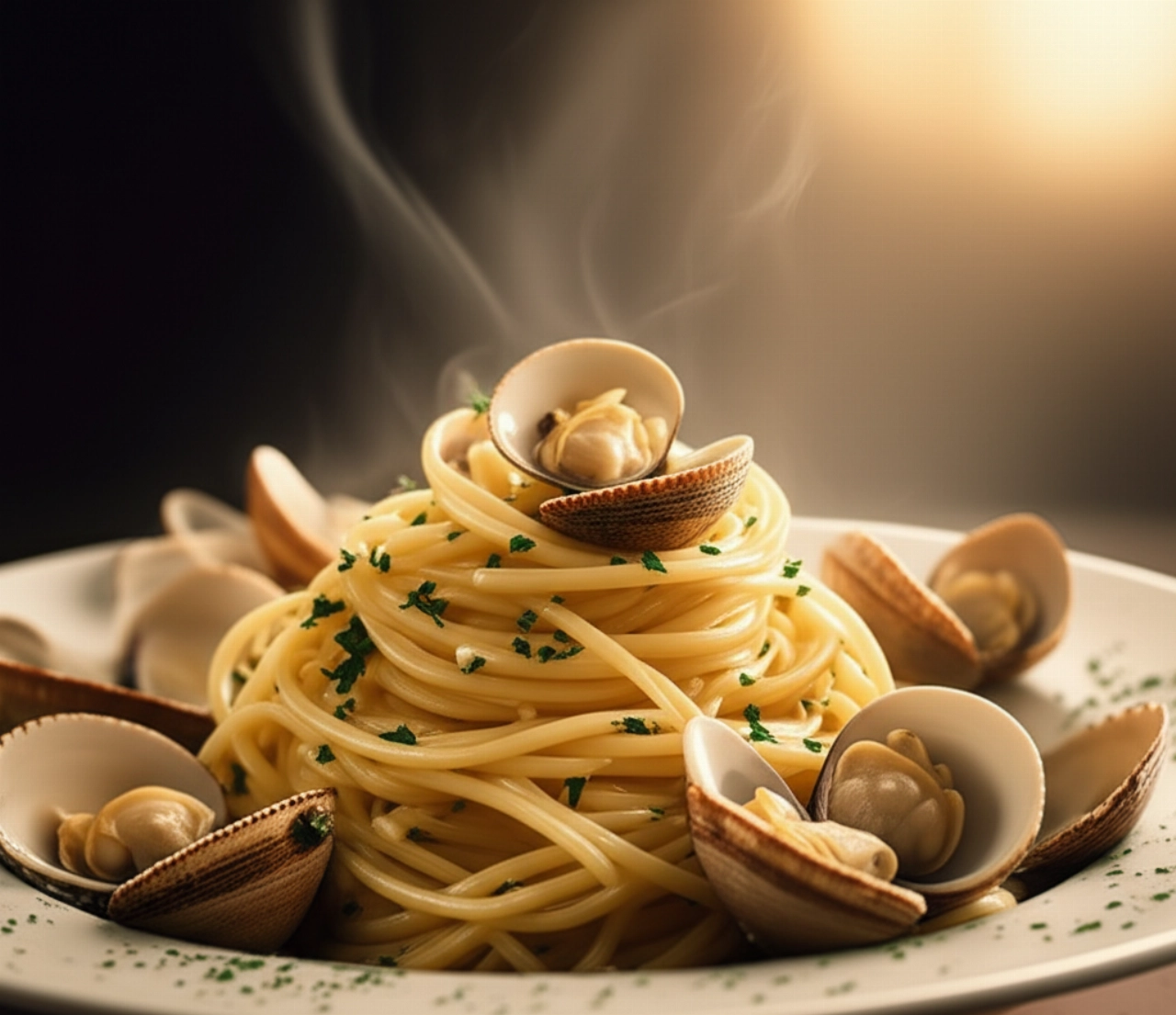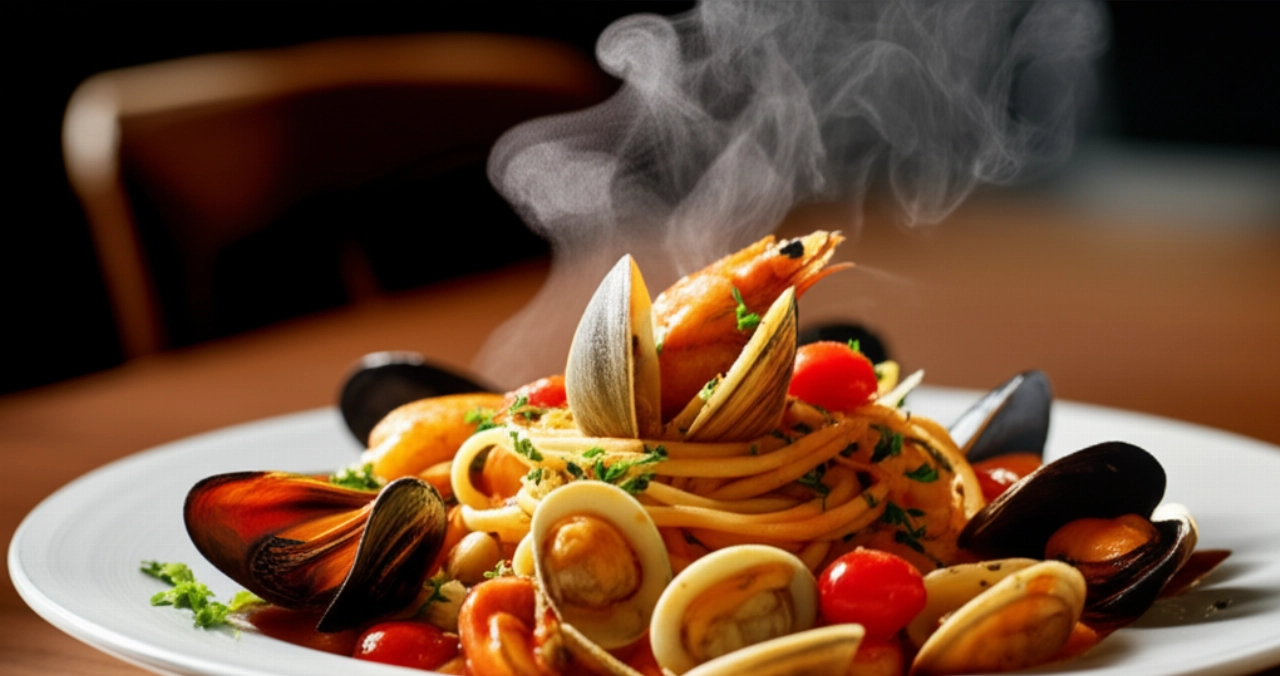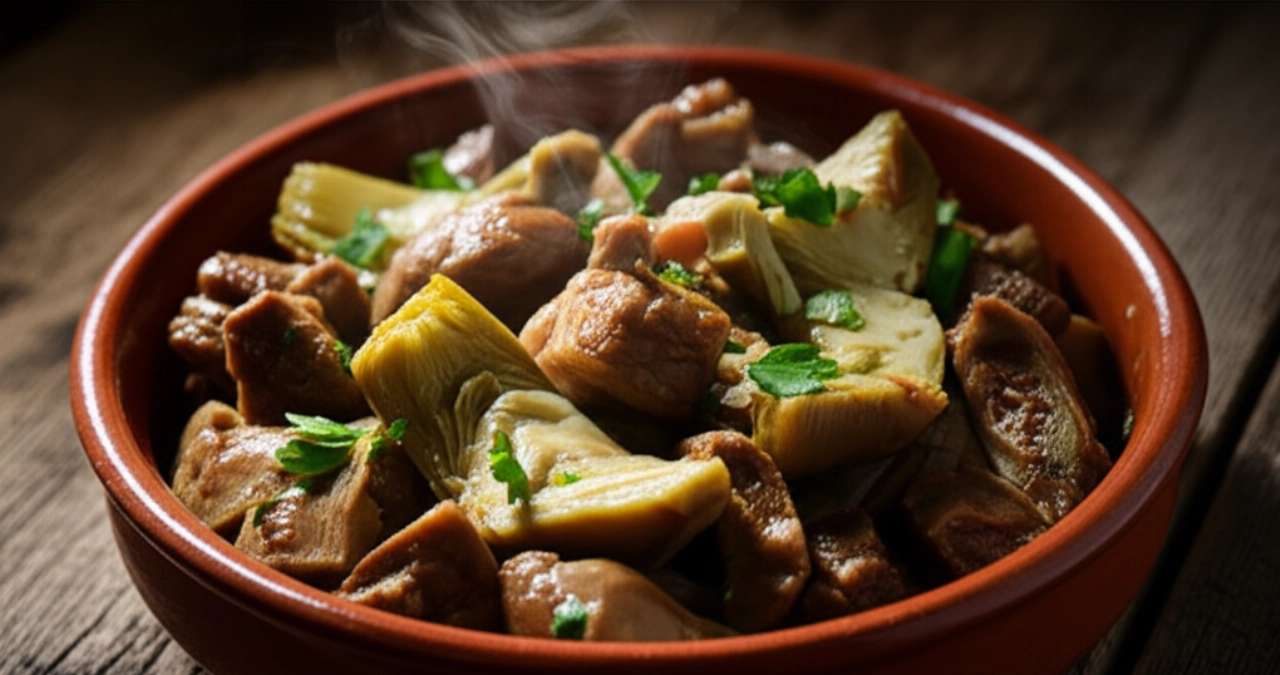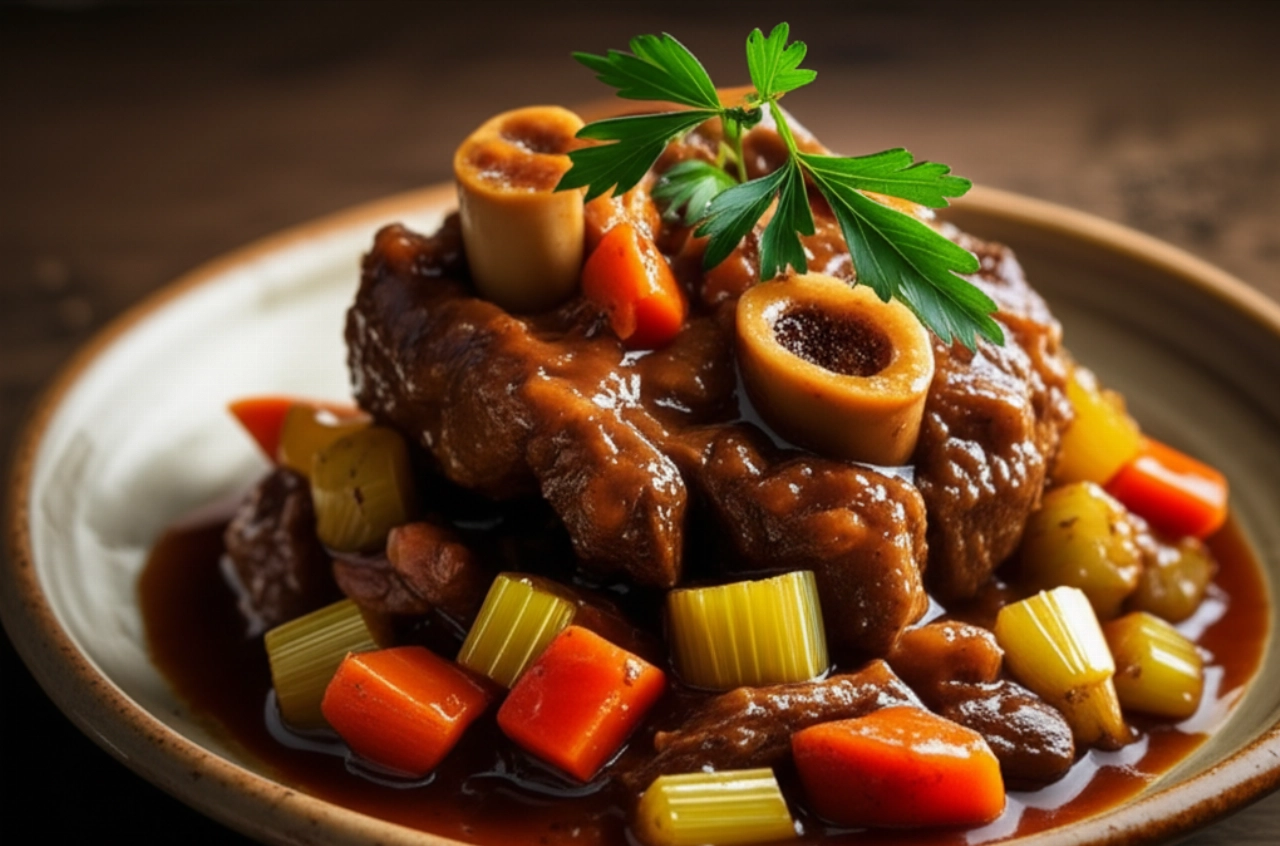Ah, spaghetti with wedge clams! A dish that tastes of saltiness, sun, endless summers on the Roman coast. It's not just a recipe, it's a memory, a scent that envelops you and takes you straight to the seaside. But how many times have you dreamed of bringing such a dish to the table, only to find yourself with sandy clams, a bland sauce, or, worse, a smell that didn't taste like "real sea"?
I completely understand your frustration. Finding the right recipe, one that guarantees success and authentic flavor, can seem like a daunting task. The fear of wasting precious ingredients, disappointing guests, or simply not getting that "wow" you're looking for, is a common thought.
Make yourself comfortable. On this page, you won't just find a list of ingredients, but the definitive guide, full of tricks and tips, to prepare the most fragrant, flavorful, and, above all, sand-free spaghetti with wedge clams you've ever tasted. Success is guaranteed, and you'll feel like a true Roman coast chef!

Smart Ingredients: The Choice That Makes the Difference
For a dish that tastes of the sea, ingredient quality is everything. It's not just a list, but a well-thought-out selection for your success.
- Very fresh wedge clams (at least 1 kg for 4 people): They are the stars! Choose them live, with tightly closed shells. If you find any open, touch them: if they close, they're alive. If they remain open, discard them. The smell should be of the sea, not "fishy." Ask your trusted fishmonger about their origin.
- Gragnano spaghetti or quality durum wheat semolina spaghetti (320-360g): Pasta is the "bed" for your clams. Choose bronze-drawn pasta, which holds the sauce better and offers a perfect texture.
- Garlic (2-3 cloves): Don't overdo it; it should accompany, not overpower. Choose fresh, fragrant garlic.
- Fresh or dried chili pepper (to taste): A touch of liveliness. Adjust according to your preference.
- Dry white wine (half a glass): Used for deglazing and adding depth of flavor. Choose a wine you'd gladly drink.
- Fresh parsley (a nice bunch): The final touch of freshness. Chop it only when ready to use.
- Quality extra virgin olive oil: The base of everything. A good oil will enhance the flavors.
- Salt and freshly ground black pepper: To balance and finish.
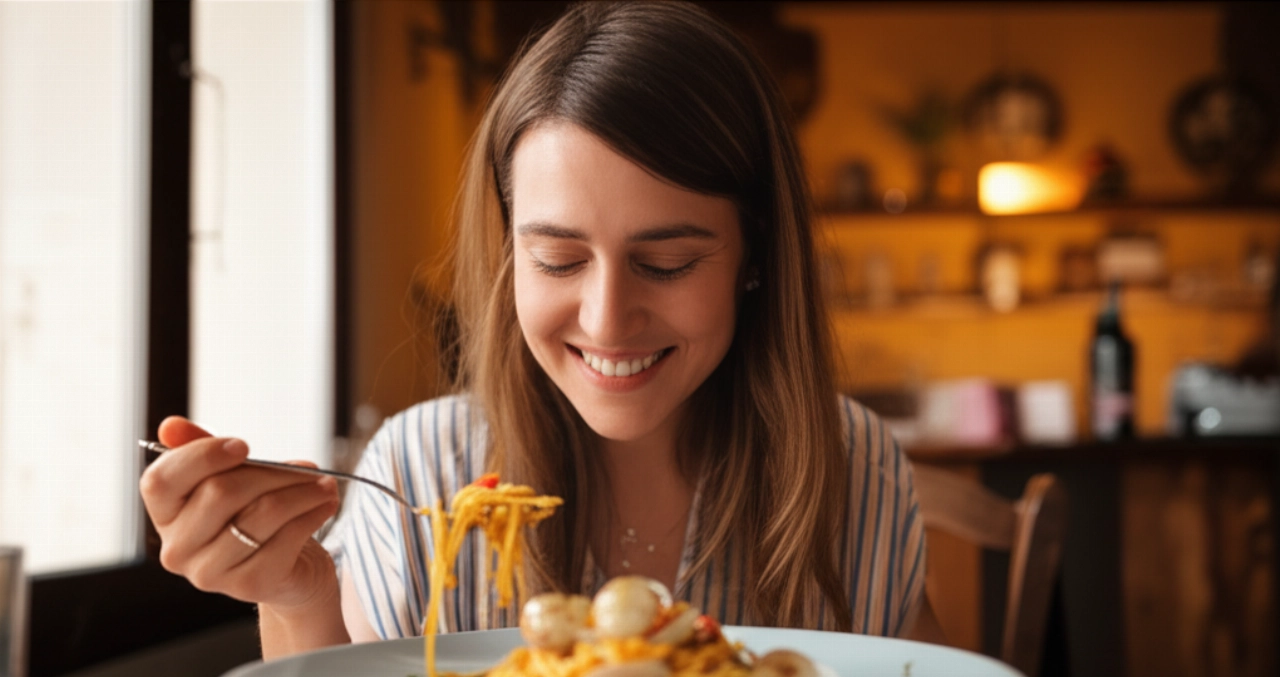
The 3 Mistakes That Turn Spaghetti with Wedge Clams into a Disaster (and How to Avoid Them)
As a "guardian" of the kitchen, I'll reveal the most common mistakes that can ruin your masterpiece. Learning from these will make you feel like a true expert!
- Not purging the wedge clams properly: This is mistake number one! A single grain of sand can ruin the entire dish. Don't rush; the purging process is crucial, and I'll explain how to do it perfectly.
- Overcooking the wedge clams: Wedge clams are delicate. If you overcook them, they become rubbery and lose their delicate flavor. They should just open, not boil for minutes.
- Not emulsifying correctly: Emulsifying (mantecatura) is the secret to binding the pasta to the sauce, creating that irresistible creamy texture. It's not enough to just drain the pasta and pour it into the sauce. I'll show you how to achieve a restaurant-quality result.
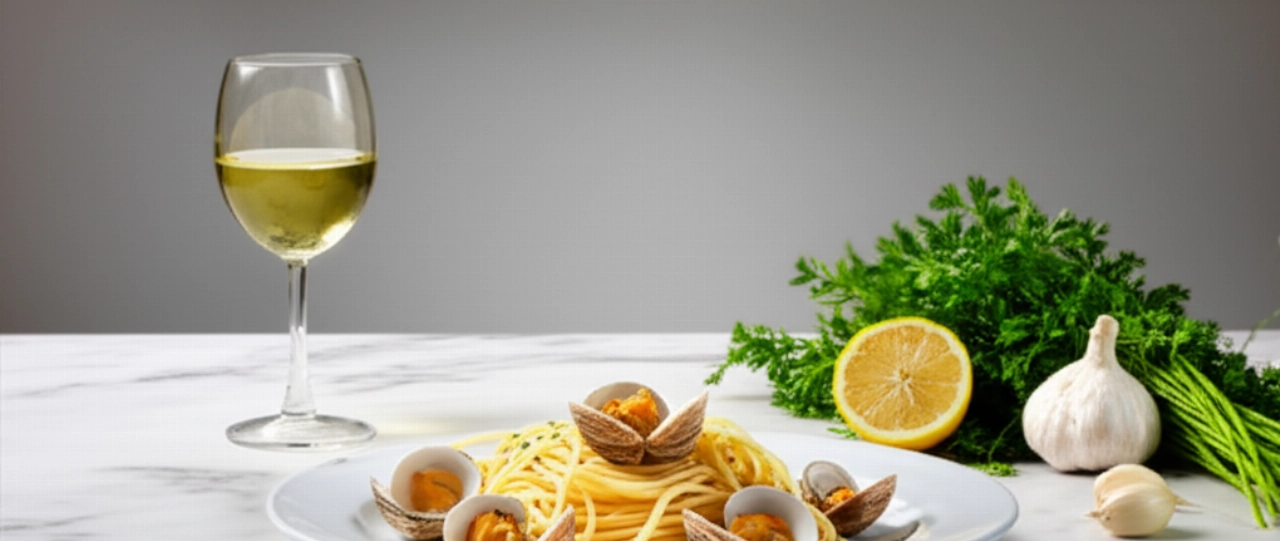
Grandma's Secret: The Touch That Tastes Like Real Sea
My grandmother, who was a wizard with seafood, always told me: "Remember, grandchild, the true scent of the sea is found in the clam water!". And she was right. Her secret was simple but ingenious: save some of the clam cooking water, filter it through a fine-mesh sieve or cheesecloth, and use it to emulsify the pasta. It's a concentrate of flavor and saltiness that enhances the dish like no other ingredient. Don't throw it away, it's liquid gold!
Let's Prepare Spaghetti with Wedge Clams Together: The Step-by-Step Guide
Phase 1: The Foolproof Clam Cleaning (The Anti-Sand Secret)
- Initial Rinse: Place the wedge clams in a colander and rinse them thoroughly under cold running water, gently rubbing them between your hands to remove external impurities.
- Purging in Salted Water: Prepare a large bowl with cold water and add coarse salt (about 30g per liter of water, like seawater). Submerge the clams and let them soak for at least 2-3 hours, or even better, for 4-6 hours. If possible, change the water every hour. This will help them expel sand.
- The Bottom Trick: Place a small inverted plate at the bottom of the bowl before adding the clams. This way, the sand they expel will settle under the plate, and the clams won't reabsorb it.
- Final Rinse: Before cooking them, rinse them one last time under cold running water. They'll be ready to release their sea flavor!
Phase 2: Preparing the Fragrant Sauce
- Aromatic Sauté: In a large pan (big enough to later hold the pasta), pour a generous drizzle of extra virgin olive oil. Add the lightly crushed garlic cloves (you can leave them whole for easier removal later, or finely chop them if you prefer a stronger flavor) and the chili pepper. Sauté over low heat until the garlic is golden and fragrant, but not burnt!
- Clams on Stage: Raise the heat. Pour the well-purged wedge clams into the pan. Immediately cover with a lid.
- The Magical Opening: Cook over high heat for 2-3 minutes, shaking the pan occasionally. The clams will open due to the heat. As soon as they've opened, remove the lid.
- Wine Deglazing: Deglaze with white wine and let the alcohol evaporate for one minute.
- Filter the Nectar: With a slotted spoon, remove the opened clams and set them aside in a bowl. Filter the cooking liquid remaining in the pan through a fine-mesh sieve (or cheesecloth) to eliminate any sand residue. This is the "nectar" grandma talked about! Return the filtered liquid to the pan.
- Shelling (if desired): If you prefer, you can shell about half of the clams, leaving the others in their shells for a scenic effect.
Phase 3: Perfect Pasta Cooking and Emulsifying
- The Pasta Water: Bring a large pot of salted water to a boil. Remember, the water should be salted "like the sea," but don't overdo it, as the clams are already salty.
- Cooking the Spaghetti: Calculate the spaghetti cooking time indicated on the package and drain them 2-3 minutes before the time. They should be very al dente.
- The Perfect Marriage: Transfer the spaghetti directly to the pan with the filtered clam sauce. Add a ladleful of pasta cooking water (or filtered clam water, if you saved a lot).
- Masterful Emulsifying: Emulsify the spaghetti over high heat, stirring continuously and adding more pasta cooking water or clam water if necessary, until you have a thick, enveloping cream that perfectly binds the pasta to the sauce. This step is crucial for the "restaurant" effect!
- The Clams Return: With the heat off, add the clams (both shelled and in their shells) and the fresh chopped parsley. Mix gently.
- Final Touch: A drizzle of extra virgin olive oil and a grind of black pepper.
Tips and Frequently Asked Questions about Spaghetti with Wedge Clams
Here are some of the questions I'm asked most often, with answers that will help you clear up any doubts.
- How can I be sure the wedge clams are well-purged?
The inverted plate method and frequent changing of salted water are the most effective. If you still see sand at the bottom after 4-6 hours, extend the purging time. A good sign is that the water remains clear after an hour.
- Can I use frozen wedge clams?
Yes, you can, but the flavor and texture will never be comparable to fresh wedge clams. If you use them, thaw them in the fridge and rinse them well. They won't need purging, but the sea aroma will be less intense.
- Which white wine is best for deglazing?
A dry, light, and not too aromatic white wine. A Vermentino, a Greco di Tufo, or even a simple white table wine will work perfectly. The important thing is that it's a quality wine that won't alter the delicate flavor of the clams.
- Can I add cherry tomatoes to spaghetti with wedge clams?
The traditional Roman recipe doesn't include cherry tomatoes, but if you like a touch of color and slight acidity, you can add a handful (halved) in the last few minutes of sauce cooking, before adding the pasta. Don't overdo it to avoid overpowering the clam flavor.
- Why do my spaghetti stick together or become mushy?
Often, it's a problem of insufficient water in the pot or overcooking. Always use plenty of water for pasta (at least 1 liter per 100g of pasta) and always drain it very al dente, because it will finish cooking in the pan with the sauce, absorbing all the flavors.
Your Seafood Masterpiece Awaits!
There you have it! Now you no longer just have a recipe, but all the secrets to bring a dish to the table that tastes of home, tradition, and love for the sea. You've learned how to choose ingredients, avoid common mistakes, and master the emulsifying technique, just like a true Roman coast chef would.
Don't be afraid to experiment. Cooking is an act of creativity and passion. But start with this solid foundation, and you'll see that applause won't be lacking. The aroma that fills your kitchen will be the first reward.
Have you tried our recipe? We're very curious to see your masterpiece! Leave a comment below, tell us how it went, or share a photo on Instagram by tagging @CercaRicette.it. If you loved these spaghetti, you can't miss our recipe for Spaghetti with Clams or a perfect seafood appetizer like Mussels Marinara.
